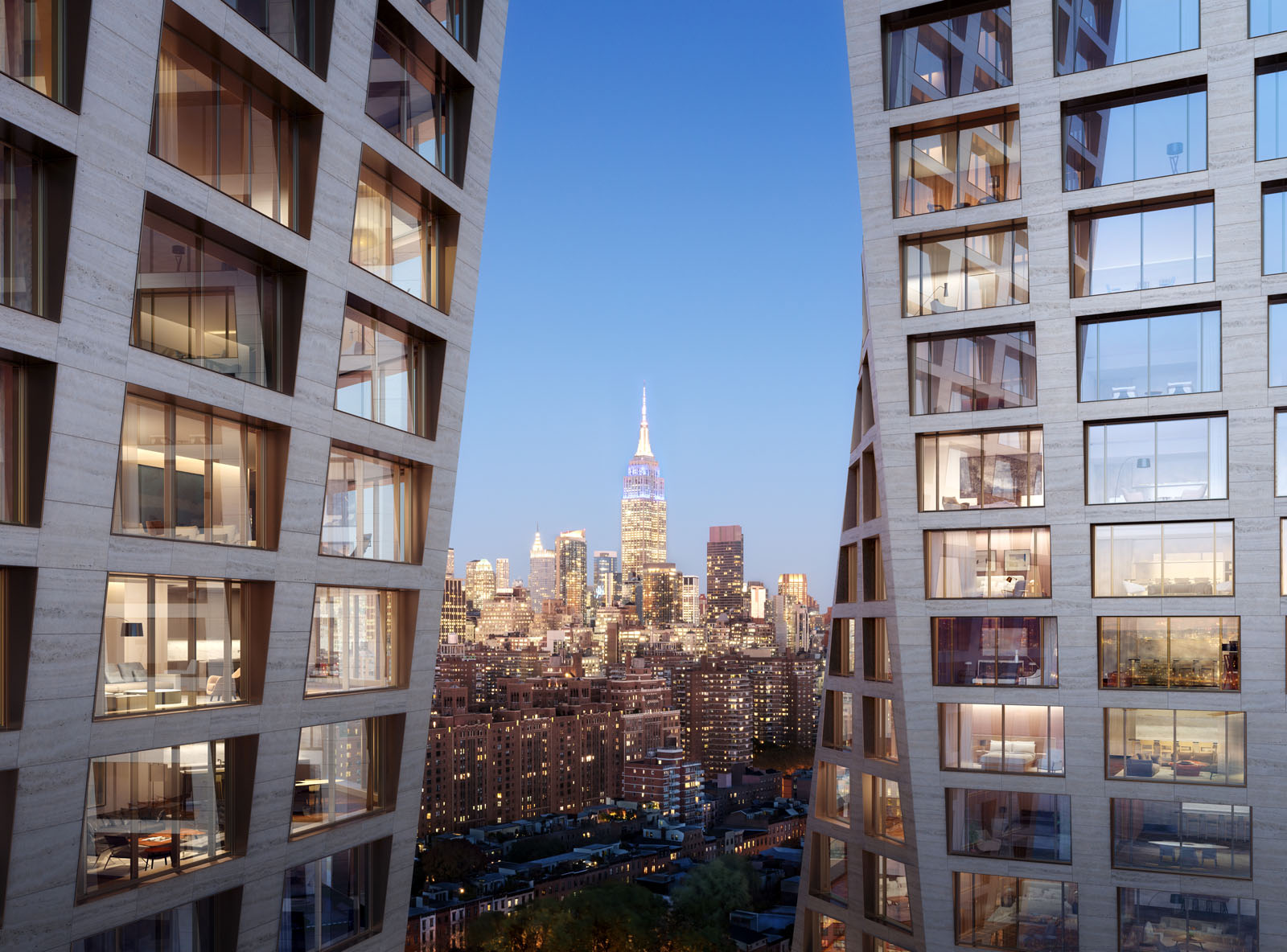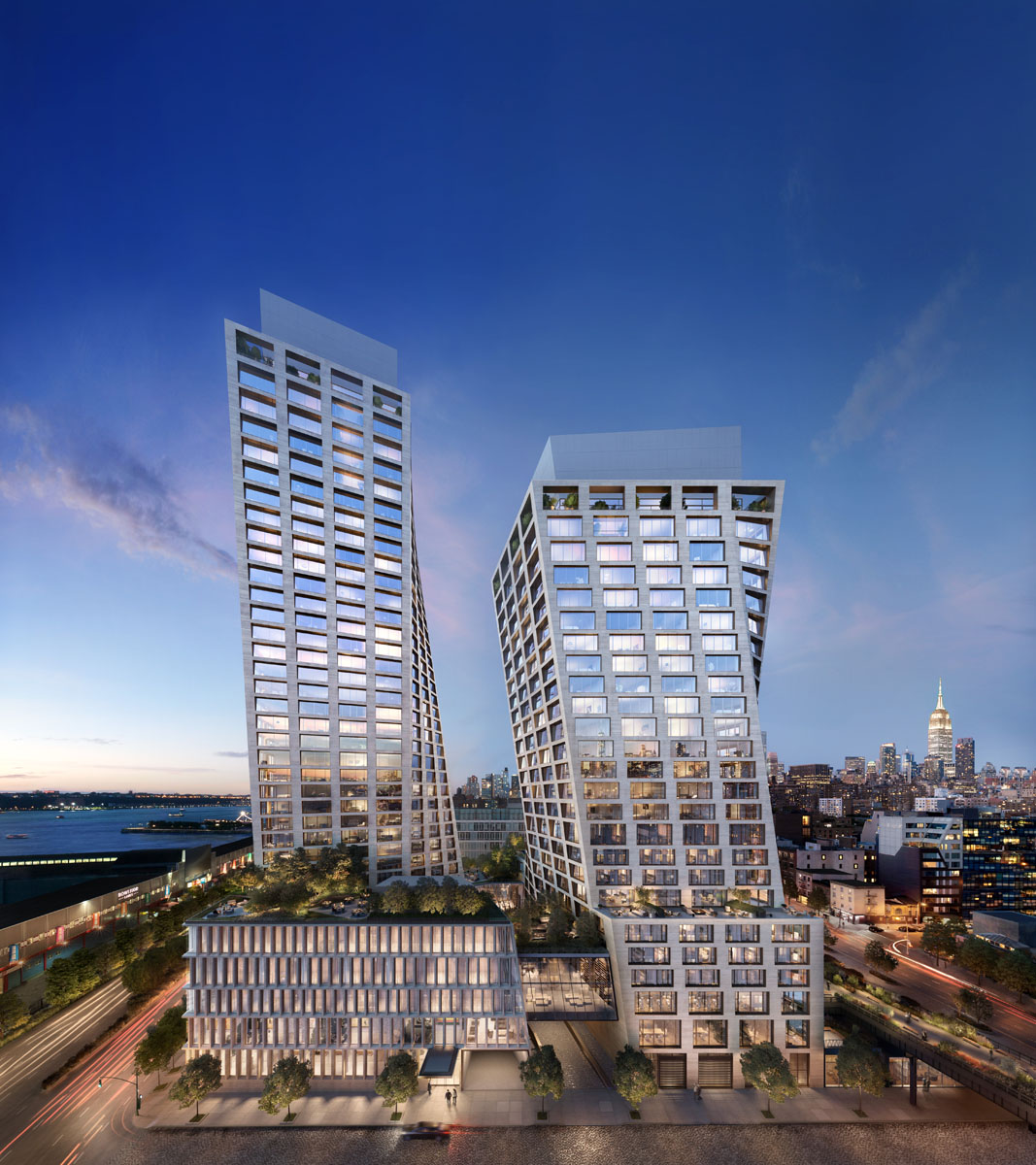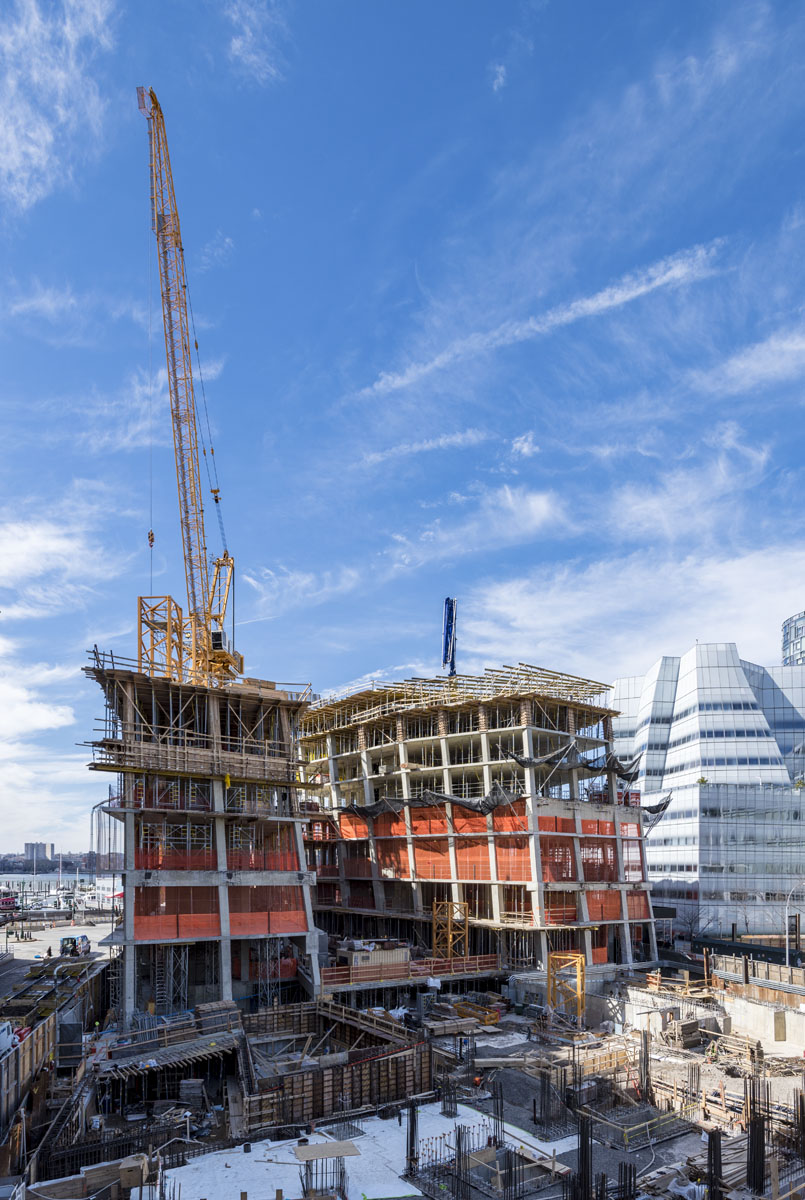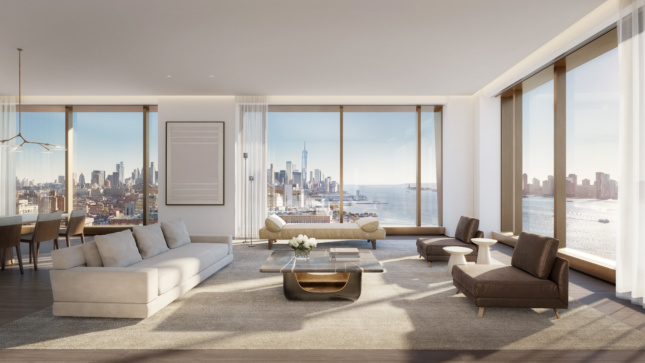Bjarke Ingels Group’s twin rotating towers are under construction along the High Line in Manhattan’s Chelsea neighborhood. The Eleventh (also known as the XI) will include luxury residences, multiple restaurants, retail, an art area and a new public promenade adjacent to The High Line. The project joins nearby buildings by Frank Gehry, Jean Nouvel, and Renzo Piano, among others.
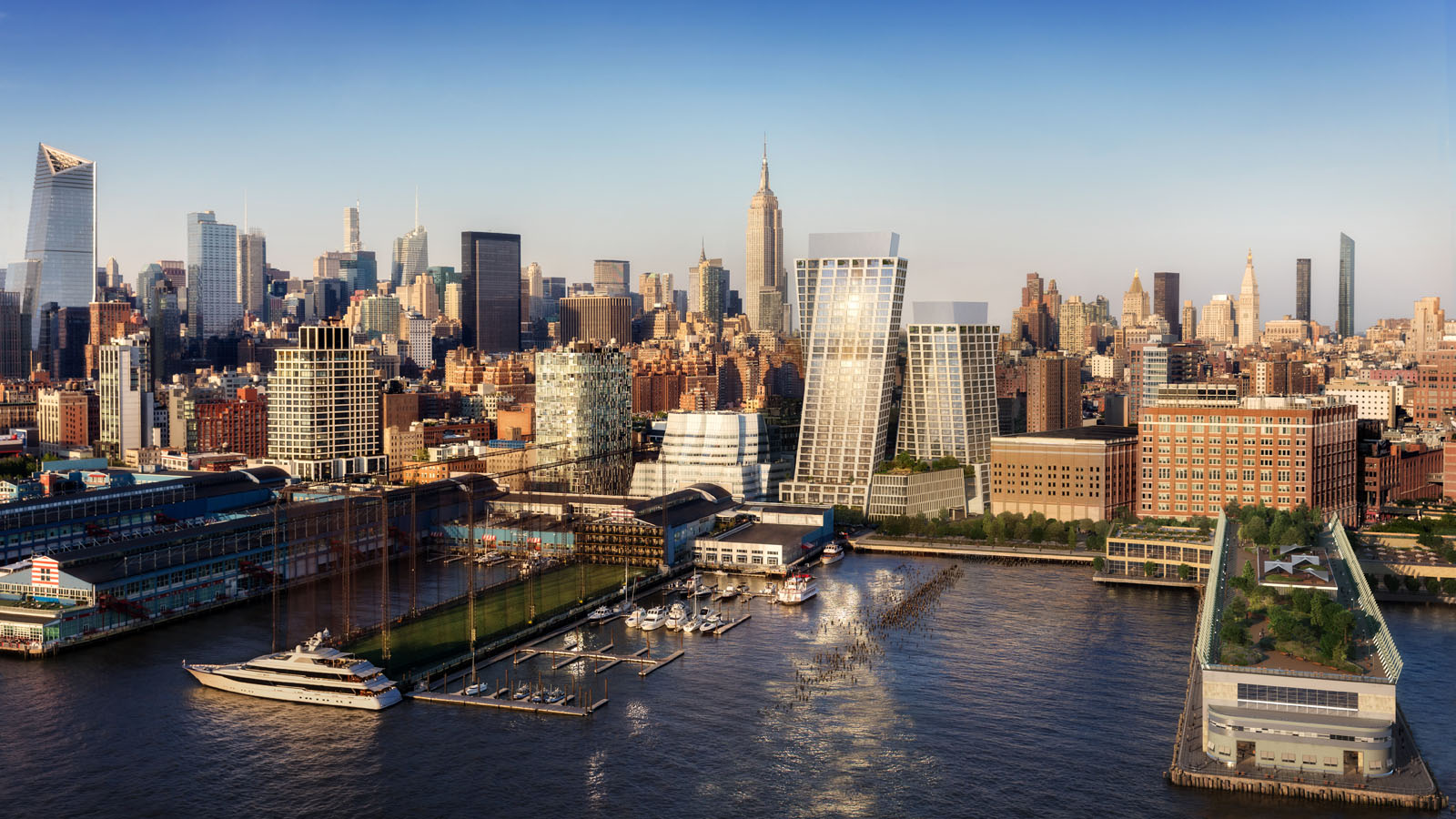
- Facade
Manufacturer
Pioneer Window MFG. Corp. - Architects
Bjarke Ingels Group, Woods Bagot
- Facade
Installer
Pioneer Window MFG. Corp. - Facade
Consultants
GMS (Building Envelope), Entek Engineering (Facade Maintenance) - Location
New York City, NY - Date of
Completion
2018 (in progress) - System
Travertine composite panels, unitized curtain wall system - Products
Custom fabricated travertine panels with honeycomb backing and unitized curtain wall windows with bronze finish
The two towers, one each on the east (No. X) and west (No. I) portion of the site, will rise to 300 feet and 400 feet, respectively. Each are clad in a travertine composite facade expressive of the underlying concrete structure behind it, with expansive punched windows with a bronze finish. “With its punched windows and gridded structural facade, The Eleventh echoes the pragmatic rationality of the neighborhood’s historic warehouses, while its sculptural geometry gives it a kinship to the local arts community,” Bjarke Ingels, founding partner of BIG, said in a statement. “The past and present of Chelsea [are] merging in a new hybrid identity.” The choice of materials helps the pair stand out among the surrounding concrete and steel structures.
The facade combines high-performance composite technology with the durable travertine to reduce the dead load on the structure. The panels are composed of a thin layer of travertine with an aluminum honeycomb core which provided a lightweight solution and an easier fabrication and installation as an alternative to hand-cut travertine. The design contains multiple ruled surfaces which resulted in challenges in the process of detailing the facade system. The travertine is flat, rigid material and, as such, the facade required the ruled surfaces to be panelized with a roughly four-by-eight-foot grid.
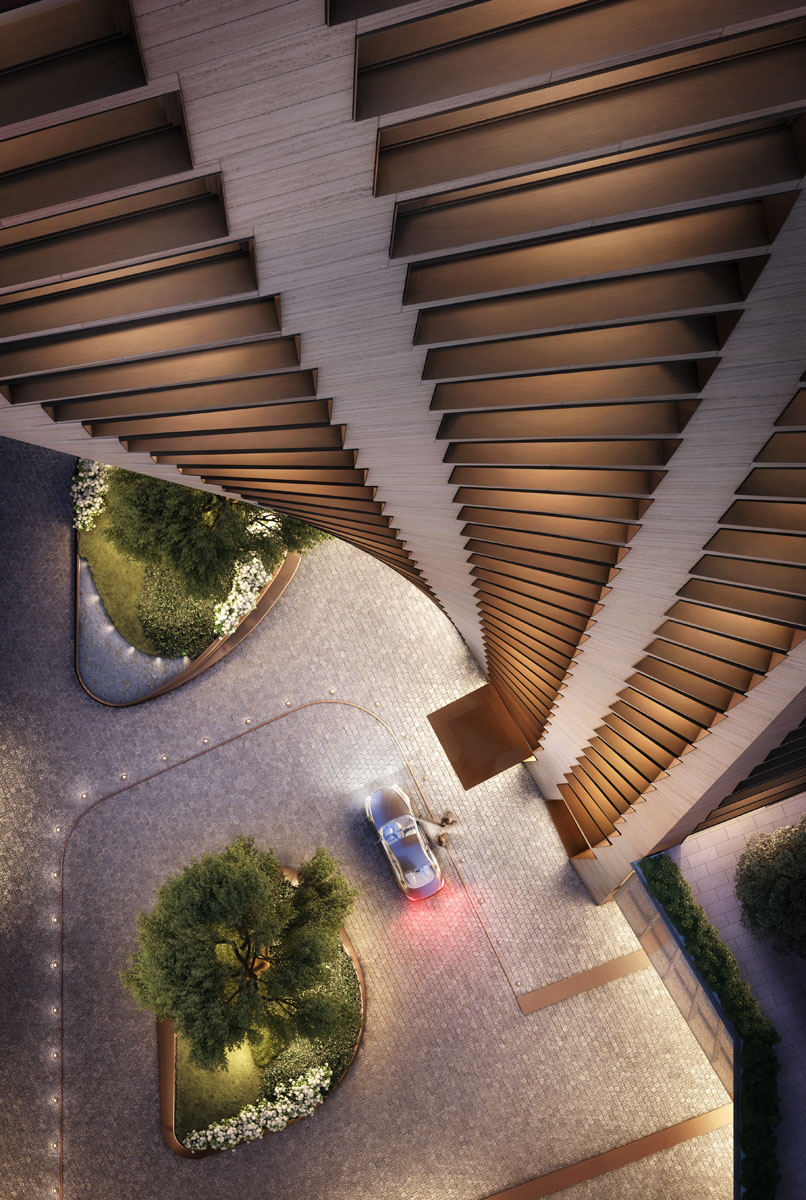
This arrangement resulted in a number of unique panel shapes and sizes. To follow the geometry, the panels are offset to one another and scaled. Since the travertine is one inch thick, the scaled panels require a travertine return to avoid any open gaps. During the design process, BIG and the facade consultants were forced to evaluate the travertine panel variation versus the window module size variation and, for various reasons, the window modules became the organizational device for the facade.
Sitting within the geometry of the building is a series of unitized curtain wall windows that punch through the facade. While designing these apertures, BIG, alongside architect of record Woods Bagot and building envelope consultant GMS, looked at a unitized system which would be suspended in front of the floor slabs but, due to the complexity of the structure, the curtain wall will span between each slab. The unitized system is a structurally glazed, aluminum and glass curtain wall system with a bronze finish.
As the renderings of the project show, the unitized system is met with an aluminum metal composite panel enclosure with the same bronze finish as the curtain wall. Due to the complexity of the facade, all elements were custom engineered and fabricated.
